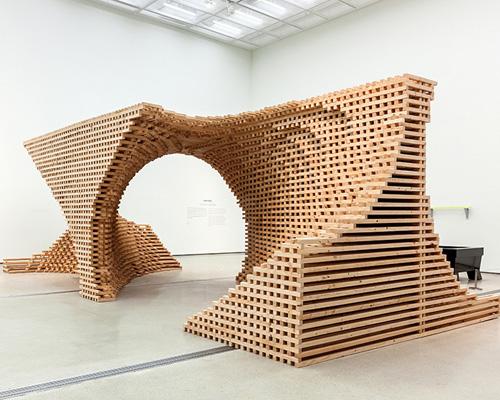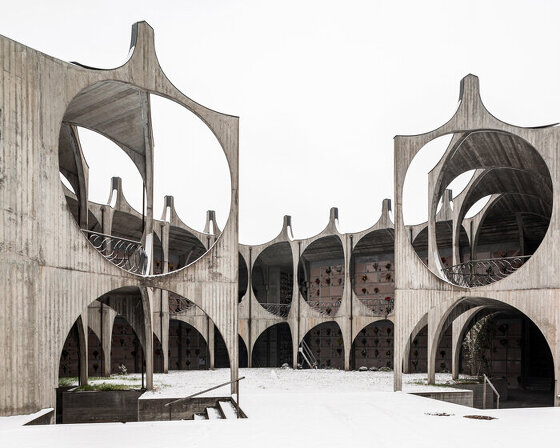HG-architecture morphs wooden modules into pixelated spiral structure
photo © kyungsub shin
all images courtesy of HG-architecture
everything in nature is made up of components. they start from basic units such as atoms and molecules, and grow to bigger pieces like tissues and organs in order to construct a ‘live’ body. the artificial environment is quite the same. it all begins with simple terms like points and lines, and expand to create surfaces and ultimately form a space. following this methodology and flow of repetition, HG-architecture has designed ‘part to whole’, an installation placed within korea’s national museum of modern and contemporary art.
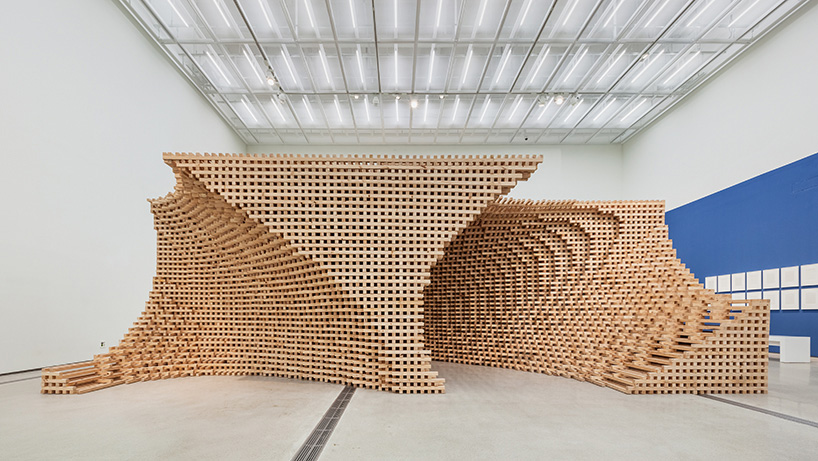
elevation
the structure is composed of 9,076 wooden modules that display the qualities of tectonics through weaving and stacking. here, a set of circles moving along the curve constructs a continuous opening. it digs the specific volume out of the cube, which simultaneously maximizes the available space and minimizes the amount of material. the result is an effect referred to as ‘stippling’, a pattern created by varying degrees of solid and void. in this case, an even ratio of 50:50 articulates two-dimensional patterns of vectors and vertices, which produces three-dimensional visuals depending on positions within the gallery.
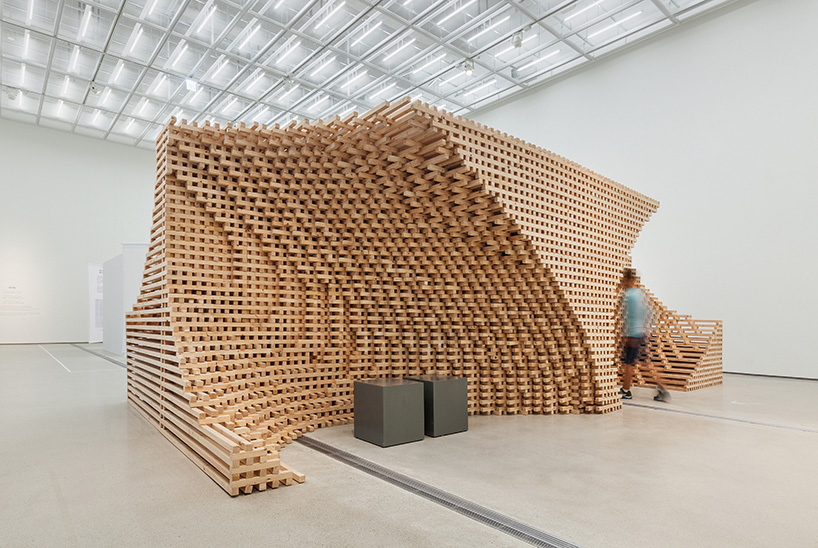
resting space
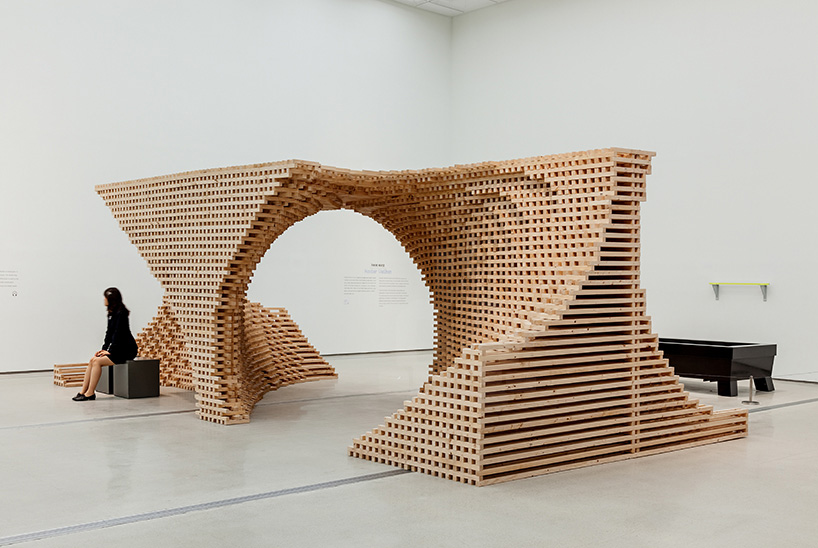
space with people
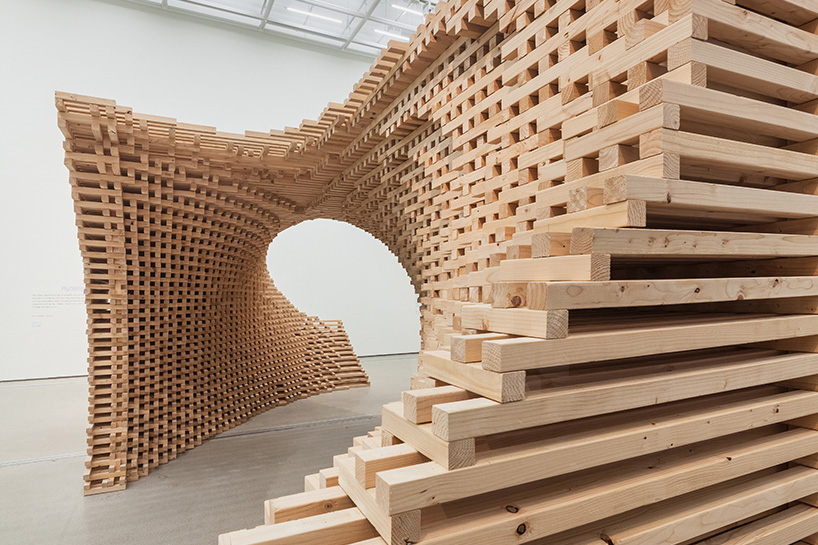
path view
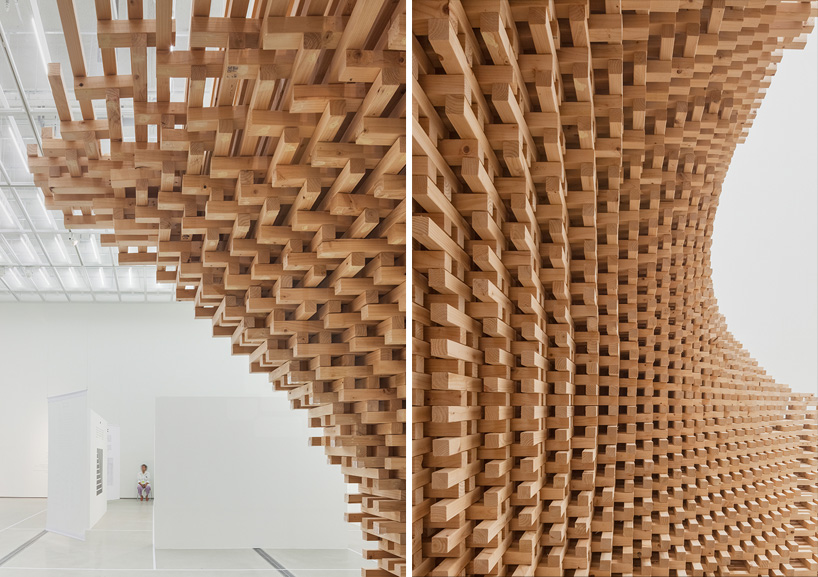
pattern transitions

looking directly through the void like a wave
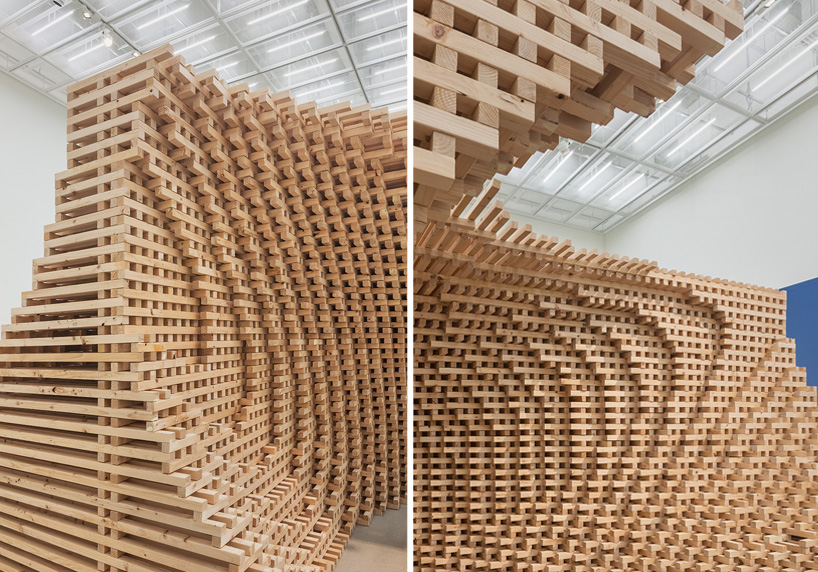
the patterns use multiple layers of solid and void
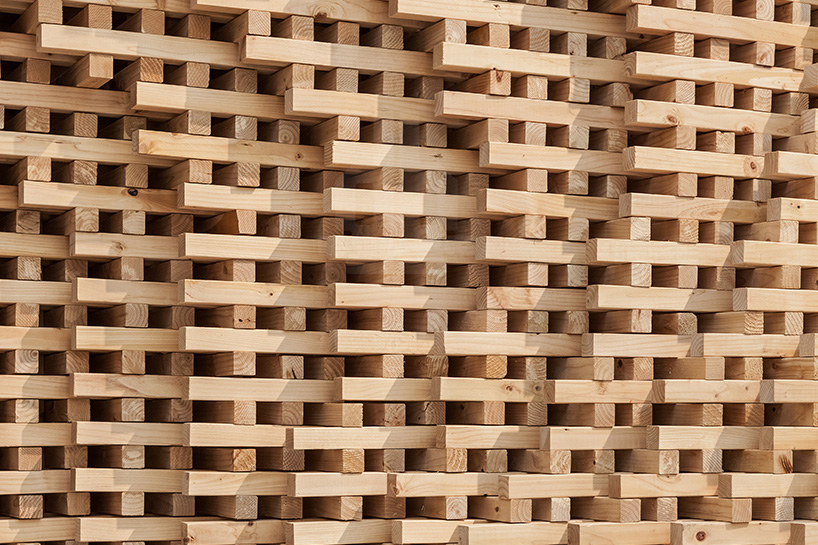
detail of the modules
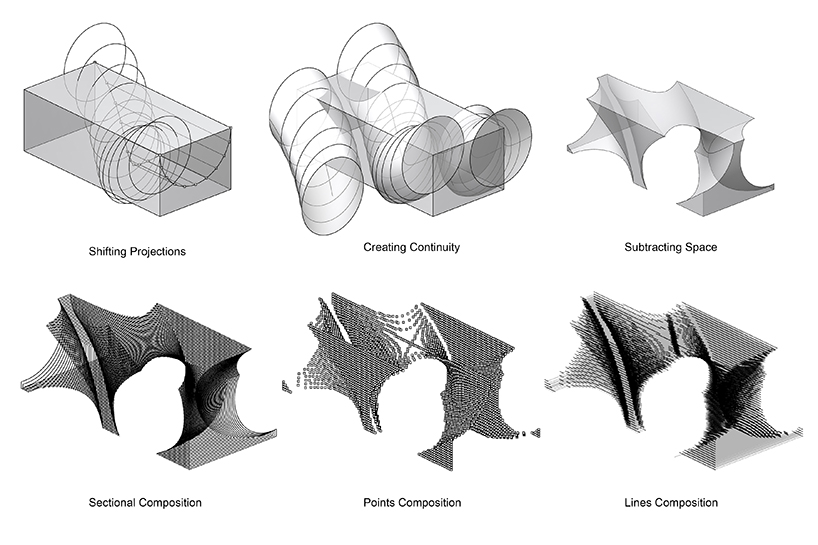
design process
project info:
commission: national museum of modern and contemporary art, korea
design: HG-A
materials: wood
construction: housing plus
sponsors: housing plus, korea forest service
photo credit: kyungsub shin
designboom has received this project from our ‘DIY submissions‘ feature, where we welcome our readers to submit their own work for publication. see more project submissions from our readers here.
